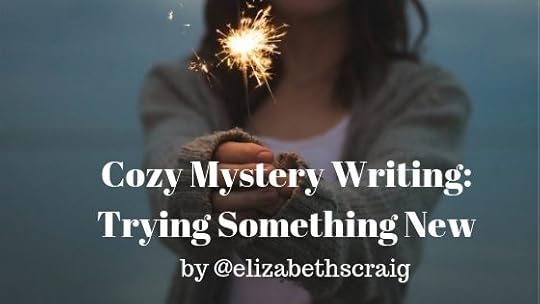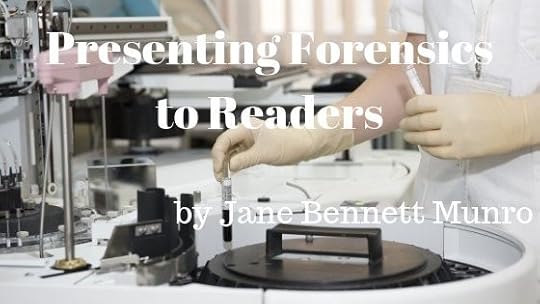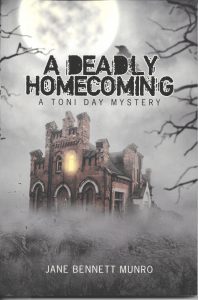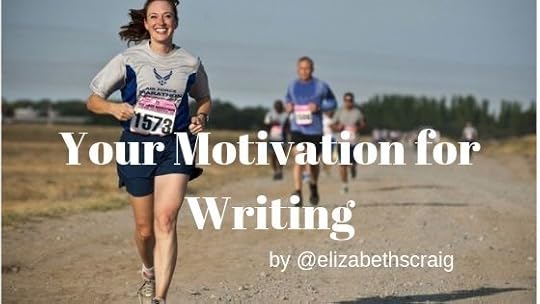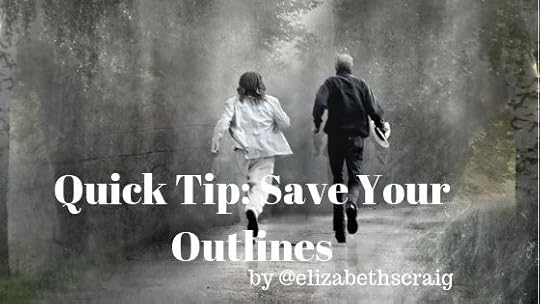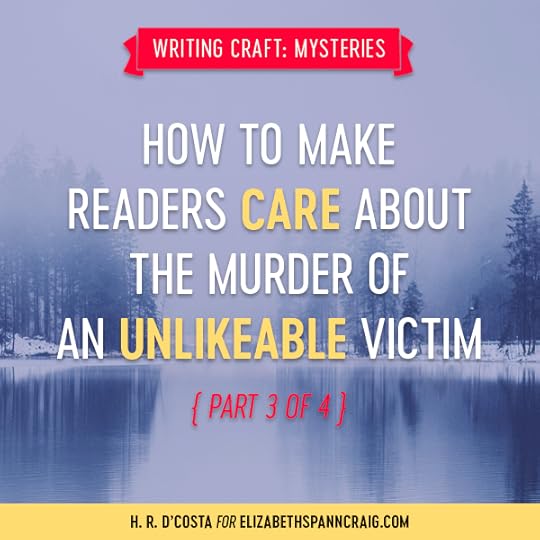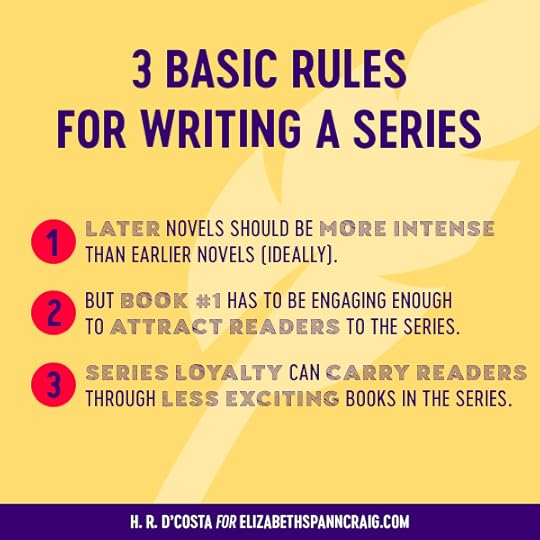Riley Adams's Blog, page 59
August 31, 2019
Twitterific Writing Links
by Elizabeth S. Craig, @elizabethscraig
Twitterific writing links are fed into the Writer’s Knowledge Base search engine (developed by writer and software engineer Mike Fleming) which has over 50,000 free articles on writing related topics. It’s the search engine for writers.
Have you visited the WKB lately? Check out the new redesign where you can browse by category, and sign up for free writing articles, on topics you choose, delivered to your email inbox! Sign up for the Hiveword newsletter here.
Hope my US blog readers have a good Labor Day! I’ll post again on Friday. :)
Business / Miscellaneous
How To Find Your Comp Authors: @DavidGaughran
6 Marketing Myths That Harm Fiction Writers: @LisaHallWilson
Organizing Business Cards for Marketing: @KarenHWhiting @EdieMelson
How To Waste Money Self-Publishing a Book: @ThDigitalReader
How authors make money: @NathanBransford
What You Want in a Publisher: @davidfarland
Conferences and Events / Miscellaneous
How To Be Sure Your Trade Show or Book Fair Appearance is Not a Disappointment: @FrugalBookPromo
BolognaFiere Leads a First Children’s Book Tour to Moscow Book Fair: @Porter_Anderson
Frankfurt BookFest Gala: Atwood, Follett, Lunde, Shafak, Whitehead: @Porter_Anderson @pubperspectives
Book Aid International’s Maurice Sendak Film Is Up for EVCOM Awards: @Porter_Anderson @EVCOMawards
Creativity and Inspiration / Goal setting
Writing Goals: One Word To Help You To Achieve Your Dreams: @angee
Creativity and Inspiration / Inspiration
3 Ways Too Much Social Media Can Hijack Your Creativity: @AnthonyEhlers @Writers_Write
Where 9 Famous Authors Got Their Ideas: @Writers_Write
Creativity and Inspiration / Inspiration / Reading as Writers
Finding Small Comfort in the Panic of Shirley Jackson: @miciahbay @lithub
5 Unexpected Continuations of Beloved Stories: by Stubby the Rocket @tordotcom
What Fiction Teaches Us About The Allure of Cults: by Kali Wallace @CrimeFest
Top Four Shakespeare Podcasts: @jvlpoet
8 Thrillers Featuring Ambitious Women: @LayneFargo
Creativity and Inspiration / Writing Life
The 50 Best One-Star Amazon Reviews of To Kill a Mockingbird: @knownemily @lithub
Managing Distractions as a Writer: by Richard Risemberg @TheRyanLanz
The How and Why of Decision Making for Writers: @christinadelay
Thoughts on Finding Writer Friends and Sharing Our Work: @StephMorrill @GoTeenWriters
How Introverts Can Thrive in The Online Writing Community: @SimonisLauren @kristen_kieffer
Why Do Some Readers Give Writers Such Harsh Feedback? @MegDowell
Crying in the Library: by Shannon Reed @parisreview
How To Stop Self-Doubt From Holding You Back From Writing: @TheLeighShulman
How to Focus on FUN as You Write Your Story: @createastorylov
Genres / Miscellaneous
How Do You Choose Your Story’s Genre? @NaomiBeaty @savethecat
Genres / Mystery
Grappling with PTSD in Crime Fiction: @hilarydavidson @CrimeReads
Cozy Mystery Writing: the Challenges of Trying Something New:
A Pathologist on Presenting Forensic Details to Readers:
Genres / Poetry
5 ways writing poetry will make you a stronger writer: @TheLeighShulman
Genres / Screenwriting
Chernobyl: How To Write A Miniseries: @thejkstudio
Promo / Blogging
How to Choose Keywords for Your Blog (and Attract the Right Audience): @MarionSelista @WritetoDone
Promo / Miscellaneous
The Truth About Book Launches: @DanBlank
Promo / Platforms
Mistakes You’re Making With Your Author Brand (And How To Avoid Them): by Manuela Williams @DIYMFA
Promo / Social Media Tips
What One Writer Loves About Pinterest (and is Frustrated By): @jvlpoet
Promo / Websites
How to Resize/Fix the Image Files on Your Author Website: @ThDigitalReader
3 Secrets to an Effective Landing Page: @ThDigitalReader @JFbookman
Publishing / Miscellaneous
The Breakout Novel and Why Publishing is Desperate for the Next Big Thing: @KristenLambTX
What to Look for in a Small Press: by T.L. Bodine
23 Best Font and Fancy Text Generators: @TCKPublishing
Publishing / News / Amazon
The American Publishers’ Lawsuit Delays Rollout of Audible Captions: @Porter_Anderson @pubperspectives
Publishing / News / Data
US Book Publisher Revenue Up Nearly 7% in First Half of 2019: @Porter_Anderson
Publishing / News / International Publishing
Beijing International Book Fair Cites 320,000 Visitors, High Tech Interest: @Porter_Anderson @pubperspectives
Frankfurt’s 2019 THE ARTS+ Focuses on ‘The Future of Culture’: @Porter_Anderson @pubperspectives
South African Book Fair and Book Week: Toward a Reading Culture: @Porter_Anderson
Singapore’s Asian Festival of Children’s Content: Taking Kids’ Lit Seriously: @Porter_Anderson @sgbookcouncil
Ahead of Frankfurt, Norway Launches 10 New Translations in China: @Porter_Anderson @pubperspectives
China Bestsellers for July: An Urban Online Gaming Culture Drives Sales: @Porter_Anderson
Publishing / Options / Self-Publishing
Amazon Self-Publishing Royalties: Here’s What You Need to Know: @ReedsyHQ
Everything Authors Need to Know about Pen Names: @kikimojo
Publishing / Process / Translation
On Translation by Arthur Sze: @PoetryFound
Writing Craft / Beginnings
Writing Your Novel’s Opening: @Lindasclare
Writing Craft / Characters / Protagonists
Sacrificial Heroes: by Antonio Del Drago @mythicscribes
Writing Craft / Common Mistakes
4 Writing Pitfalls to Avoid at All Costs: @LMacNaughton
Writing Craft / Conflict
Conflict Thesaurus Entry: Seeing an Ex with Someone New: @beccapuglisi
Writing Fight Scenes: @DN_Bryn
Writing Craft / Lessons from Books and Film
What Skyrim Can Teach Us About World-Building: @SMCarriere
Writing Craft / Literary Devices
10 Literary Devices to Master: @cleemckenzie @TheIWSG
Writing Craft / Miscellaneous
5 Writing Ideas To Transform A Boring Scene: @KMAllan_writer
9 Ways To Write With Literary Flair: by Oliver Fox @Writers_Write
Writing Book Club Fiction: What 5 Reading Guide Questions Can Teach Us: @kcraftwriter
How to Write About Pain in Fiction: by Stacey Bowditch @pbackwriter
Five Information Technology Blunders and How to Fix Them: by Chris Winkle @mythcreants
What’s a MacGuffin, Anyway? by Larry Pass @StoryGrid
Advice on Writing Great Friendships: @AuthorMarilene
Story Goal, Story Question, Inner Need: @NovelEditor
5 Ways to Ensure Readers Don’t Abandon Your Book: @scribesworld @JaneFriedman
Are You Preaching or Persuading? @AnneJanzer
12 Female Literary Characters Who Are More Than Damsels in Distress: @TCKPublishing
Extrapolating the Past: @PJTAuthor @DIYMFA
Three Simple Questions That Will Unlock Your Story: @LisaCron
Writing Craft / Pre-Writing / Story Concept
How to Sort and Stack Your Ideas and Tasks to Transform as a Writer and Person: @annkroeker
Writing Craft / Punctuation and Grammar
When to Use a Semicolon vs. Colons: @GramrgednAngel @BookWorksNYC
Writing Craft / Revisions / Critiques
6 Tips for Finding a Great Critique Partner: @Julie_Glover
How to Handle Feedback about Your Work: @WritersCoach
Uncategorized
How to Find Old Tweets By Time Period, Keyword, And More: @Emily @lifehacker wkb71
Five Popular Tropes Writers Struggle With: by Oren Ashkenazi @mythcreants wkb13
The Top Writing Links From Last Week Are On Twitterific:
Click To Tweet
The post Twitterific Writing Links appeared first on Elizabeth Spann Craig.
August 29, 2019
Cozy Mystery Writing: Trying New Things
by Elizabeth S. Craig, @elizabethscraig
When I came back from my France trip in July, several people asked me if I was planning to ‘take Myrtle on a trip to Paris.’ Although I think my octogenarian sleuth would likely love Paris and I’m not totally ruling it out, there are problems with taking Myrtle there…or anywhere that isn’t her small town that she usually lives in.
I have taken Myrtle on a little field trip…a cruise a few years ago. What I discovered, though, was that sometimes readers like the idea of a change. But when the change is made, sometimes they’re not as enthusiastic.
Here are ideas for shaking things up a little in a long-running cozy mystery series (and some likely pros and cons for doing so):
Taking Characters On A Trip
This can be fun to write and also to read. The pros are that you’re taking your characters to a different setting and seeing how they act in that different environment. They’ll meet new people along the way and will experience different and interesting places.
The big issue here is that you probably can’t move your whole story world. Although I did get some positive feedback from readers when I took Myrtle on vacation,
Trying a Manor House/Country House Approach
How do these work? The ingredients are pretty simple: a large, remote home; a house party; and a murder. Extra points if bad weather keeps the guests confined. The field of suspects is limited and tension runs high.
One of the potential problems with this approach is the same as the issue with taking the characters on a trip: are you going to move your entire cast of characters to the country house? If so, what’s the occasion (and just how big is that house?)
To read some examples of these stories, check out this post by Stephen Giles of Crime Reads and this one on Cross-Examining Crimes.
Introducing New, Recurring Characters
This is one way to inject something a little different into a long-running series. Maybe it’s a character who rubs your protagonist the wrong way and can add some conflict to the stories. Maybe it’s a love interest for your protagonist or another character. Whatever it is, they add a new element to the series.
A con of this approach is that you’re adding to your cast of characters…which may be fine, or may be a problem if you already had a large cast. Also, this is another character you’ll need to write for so it can add to a work load if it’s a recurring character you’re going t o keep up with.
Lesley A. Diehl has a good post on this, specific to cozy mysteries.
As a reader, what do you like to see as a new element in a long-running series? As a writer, do you look for ways to keep a series from feeling stale?
Cozy Mystery Writing: Trying New Things:
Click To Tweet
Photo on Visualhunt.com
The post Cozy Mystery Writing: Trying New Things appeared first on Elizabeth Spann Craig.
August 25, 2019
A Pathologist on Presenting Forensics to Readers
Medical practice, particularly pathology practice, is rife with jargon. I can’t not use it; that would destroy the authenticity. I don’t want to dumb it down; that would be patronizing. I don’t want it to be a lecture; that would put readers to sleep.
While I was married, I frequently had to explain things to my husband. He was a medical technologist, as was I, when we first met. Later he became a histotech and worked for me. Many times I assumed he would know things because we worked so closely together, and would be surprised when it turned out he didn’t. Unfortunately, working together wasn’t a good idea and we ended up divorcing after thirty years.
So in my Toni Day mysteries, I have Toni explain things to her husband, Hal, or to her mother, or friends, employees, and other doctors. I have them ask appropriate questions that Toni can answer, so instead of a lecture, it’s just dialogue.
Now, with regard to those who are squeamish; how do I present forensic details in a way that won’t make them sick? I don’t. By their very nature, murder scenes and autopsies have a certain ick factor that can’t be denied. It would destroy authenticity. Toni isn’t squeamish. She couldn’t be a pathologist if she were. It would be out of character for her to sugarcoat the gory details.
I’d be lying if I said nobody has ever complained. Of course I’ve had complaints. One of my friends said after reading Too Much Blood that she was shocked to be plunged right into a “full-on autopsy” in the first chapter. But it didn’t stop her from finishing the book and buying all the rest of them.
My hairdresser was so turned off by my description of the body that went splat! on the Lido Deck that she stopped reading and put the book aside for six months before she could go back and read the rest of it. But she did finish it, as well as all my other books, and loans them to her friends. Now her big complaint is that she never gets them back.
I did an interview back in 2012 for the early morning show on our local TV station, after the publication of my first book, Murder under the Microscope, and we got onto the subject of why people think all pathologists do is autopsies. I explained that nowadays most pathologists do very few autopsies unless they are medical examiners. One has to be board-certified in forensic pathology which requires an extra year of residency, and one has to work in a large city to make a living at it. Our coroner’s cases go to Boise.
Hospital autopsies have become vanishingly rare now because of imaging techniques that allow radiologists to see everything and stick a needle in it for a biopsy. I read an article in a journal recently that said autopsies were now so rare that residency programs are obliged to use “virtual autopsies” for teaching purposes.
Hospital-based pathologists like me and Toni Day spend the bulk of their time on surgical specimens. They also review all the abnormal Pap smears, and they do all the non-gynecologic cytology, as well as bone marrows, fine needle aspirations, and of course running the lab. They work closely with radiologists, surgeons, and oncologists (the cancer doctors) and other doctors with questions about lab results that they don’t understand, or don’t know exactly which tests they should order.
But, as I explained to my interviewers, Nick and Danielle, all that would look very boring if it was in a movie. Unless, of course, I went into the histology lab and there was, like, a big juicy colon… Nick and Danielle went “Whoa! I hope nobody’s eating breakfast right now!”
Oops.
Rhonda had recorded my interview on the DVR and we watched it together when I got home. After the interview was over and I had left, Nick turned to Danielle and said, “That was probably the first time the words ‘big juicy colon’ have been spoken on television.”
But it wasn’t the last. Nick and Danielle interviewed me two more times, after Too Much Blood and Grievous Bodily Harm came out, and they brought up the saga of the “big juicy colon” during the interview both times. Then they moved to the east coast, and subsequent interviews weren’t nearly so much fun.
Now, everybody I tell this story to finds it hilarious. As one of my fellow residents said as I was grossing a particularly weepy malodorous leg amputation for gangrene, “They don’t call it ‘gross’ pathology for nothing!”
Gross can be fun.
 Jane Bennett Munro has been a hospital-based pathologist for 40 years, incorporating her medical and forensic knowledge to give her books a realistic and riveting feel. Her novel, “Murder Under the Microscope,” received a 2012 IPPY Award. Her novel “Too Much Blood” won a 2014 Feathered Quill Award. She is also the author of “Grievous Bodily Harm,” Death by Autopsy,” and “Body on the Lido Deck.” Munro is semiretired, and lives and writes in Twin Falls, Idaho.
Jane Bennett Munro has been a hospital-based pathologist for 40 years, incorporating her medical and forensic knowledge to give her books a realistic and riveting feel. Her novel, “Murder Under the Microscope,” received a 2012 IPPY Award. Her novel “Too Much Blood” won a 2014 Feathered Quill Award. She is also the author of “Grievous Bodily Harm,” Death by Autopsy,” and “Body on the Lido Deck.” Munro is semiretired, and lives and writes in Twin Falls, Idaho.
The newest book in her series, “A Deadly Homecoming,” takes Toni on a trip from Twin Falls, ID, back to her hometown of Long Beach, CA, to investigate the sudden disappearance of a dearly family friend, Doris’s, husband. At the same time, Doris is dealing with a mysterious illness that sends her into a coma. With the help of her mother, step-father, husband, Toni begins to piece together this complex case, while also uncovering clues that leaves her own life at risk.
Purchase on Amazon
A Pathologist on Presenting Forensic Details to Readers:
Click To Tweet
Photo on Visualhunt.com
The post A Pathologist on Presenting Forensics to Readers appeared first on Elizabeth Spann Craig.
August 24, 2019
Twitterific Writing Links
by Elizabeth S. Craig, @elizabethscraig
Twitterific writing links are fed into the Writer’s Knowledge Base search engine (developed by writer and software engineer Mike Fleming) which has over 50,000 free articles on writing related topics. It’s the search engine for writers.
Have you visited the WKB lately? Check out the new redesign where you can browse by category, and sign up for free writing articles, on topics you choose, delivered to your email inbox! Sign up for the Hiveword newsletter here.
Business / Miscellaneous
Attraction Marketing And Tips For Creative Business: by André Chaperon @thecreativepenn
A Writer’s Guide to ROI: @annkroeker
Conferences and Events / Miscellaneous
India’s Jaipur Literary Fest Announces New York Stop on International Tour: @Porter_Anderson @pubperspectives
German Book Prize Releases Its 2019 Longlist: A ‘Stimulating Discussion’: @Porter_Anderson @pubperspectives
During the Edinburgh Book Festival: Publishing Scotland’s 2019 Fellowship: @Porter_Anderson @PublishScotland @edbookfest
Beijing International Book Fair: Phoenix Publishing’s Global Strategy: @Porter_Anderson @pubperspectives
Creativity and Inspiration / Careers in Writing and Day Jobs
Side Hustles for Writers: @RachelleGardner
Creativity and Inspiration / Goal setting
Achieve Your Writing Goals: @jimdempsey @WriterUnboxed
Creativity and Inspiration / Inspiration
Creativity: How to Draw Nothing: @rfishewan @DIYMFA
Creativity and Inspiration / Inspiration / Reading as Writers
On the Power of Ghostly Narrators: @mamtachaudhry1 @lithub
7 Novels Set in Deserts: by Ruchika Tomar @ElectricLit
How Fiction Fuses the Incompatible Realities of Religion and Comedy: by Randy Boyagoda @lithub
Spurned in Love, Edith Wharton Turned to Poetry: by Irene Goldman-Price @lithub
Creativity and Inspiration / Motivation
Why it’s Important to Know Your Motivation for Writing:
Creativity and Inspiration / Productivity / Fitting in Writing
Too busy to write? Here’s what to do: @pubcoach
How to work in the summer, when you don’t feel like it: @pubcoach
Creativity and Inspiration / Productivity / Writer’s Block
Use These Novel-Writing Tips to Get Unstuck: @NYBookEditors
Creativity and Inspiration / Writing Life
Dealing with Haters: Some Motivation Against the People That Try to Poo-Poo Your Writing: @MichaelLaRonn
How to Manage Criticism: @MADaboutWords @FloridaWriters1
10 Ways to Support Other Authors: @AlexJCavanaugh @TheIWSG
Meditation Techniques and At-Desk Exercises for Writers: by Kelsey Worsham @WrittenWordM
Are You Too Distracted to Write? @pubcoach
8 Ways to Improve Your Writing: by Bucket Siler
5 Tips to Grow Your Vocabulary: @TimSuddeth @EdieMelson
How to Host a DIY Writers’ Retreat: @LisaEBetz @A3writers
5 Essential C’s for Writing: by Orly Konig
When a Story Leaves You Feeling Emotionally Drained: @MegDowell
How To Build a Writing Community: @JamiGold
Genres / Fantasy
12 Times SFF Characters Trained Their Own Duplicates: by Stubby the Rocket @tordotcom
Foodbuilding as Worldbuilding — Creating Fantasy Cuisines: by Karstenberg @mythicscribes
History for Fantasy Writers: Cowboys of Europe: by E.L. Skip Knox @mythicscribes
Genres / Horror
A Brief History Of Folk Horror In Literature: @chris_shultz81 @LitReactor
A Look Back at the Horror Influences of “Stranger Things”: @HauntedMeg @BDisgusting
Genres / Mystery
Crime Writing: Speed Loaders for Revolvers: @LeeLofland
Crime Writing: A Cop’s Duty Belt: @LeeLofland
Promo / Ads
BookBub For Authors: The Ultimate Guide (+ Free Submission Calendar): @ReedsyHQ
Promo / Blogging
Book Marketing: How To Make Your Blog Work For Books And Author Brand: @amyshojai @thecreativepenn
Getting Out Of A Blogging Rut: @KMAllan_writer
Promo / Book Descriptions and Copywriting
Writing Your Novel’s Book Description: @stacitroilo @StoryEmpire
Promo / Book Reviews
9 ways to use reader reviews in book marketing: @sandrabeckwith
Promo / Images
Ten Free Online Image, Graphic, and Photo Manipulation Tools: @ThDigitalReader
Promo / Newsletters
Why Do Authors Need a Newsletter? @AHuelsenbeck
Email Marketing: Your Secret Weapon: @DavidGaughran
Publishing / Miscellaneous
On Pirating Books: @helpfulsnowman @LitReactor
One Story, Many Paths: @JoEberhardt @WriterUnboxed
How Long Should a Book Be? @shauntagrimes
7 Mistakes to Avoid When Recording Your Audiobook: @GordonRothman @IndieAuthorALLI
Audiobooks’ International Volume: Spanish Audio and US Publishers: @Porter_Anderson @javiercelaya @pubperspectives
Wattpad and Viu in Partnership; Yellow Bird Options ‘Spotify Untold’: @Porter_Anderson @wattpad
Why Do So Many Bad Books Sell on Amazon? @KMWeiland
Serendipity in Publishing: by Richard Charkin @pubperspectives
Publishing / News / Amazon
“Debate Flares Again Around ‘Fake and Illegitimate’ Online Book Sales” at Amazon: @Porter_Anderson @DavidStreitfeld
Publishing / News / International Publishing
Russian Publishers Say Social Media Users May Read Audiobooks on VK: by Eugene Gerden @pubperspectives
Asian Bookstore Forum 2019: The Retail Context in China Today (‘Moving Away from Physical Stores’): @Porter_Anderson
Germany’s Projekt DEAL and Springer; Baker & Taylor Signs McSweeney’s: @Porter_Anderson @pubperspectives
Publishing / Options / Self-Publishing
Give Your Self-Published Book Its Best Shot: @lwreyes
Publishing / Options / Traditional Publishing / Querying
1 Writer’s Experience Querying and Getting an Agent: @AuthorSAT
Publishing / Process / Book Design
Which Looks Better, Hardcovers or Paperbacks? @ruthbuchwald @ElectricLit
Publishing / Process / Formatting
How to Format Your eBook for Easier Distribution: by Kelsey Worsham @WrittenWordM
Writing Craft / Beginnings
A First Page Critique: @ClareLangleyH @killzoneauthors
Writing Craft / Conflict
Conflict Thesaurus Entry: A Deadline Being Moved Up: @AngelaAckerman
Writing Craft / Dialogue
Real Life Diagnostics: Does the Dialogue in This Scene Work? @Janice_Hardy
How to Write Dialogue: Tips to Captivate Readers: @Roz_Morris @IngramSpark
Writing Craft / Diversity
It’s Time To Face Facts: Diversity Makes Stories Better: @Bang2write
Writing Craft / Endings
Writing Your Novel’s Ending: @Lindasclare
Writing Craft / Flashback and Back Story
Character Backstory: @JulietteWade
Writing Craft / Lessons from Books and Film
5 Ways John Steinbeck Can Help You Improve Your Writing: @FredBobJohn @standoutbooks
Writing Craft / Literary Devices
How Jane Austen Creates a Theme: @themaltesetiger
Writing Craft / Miscellaneous
5 Tips for Writing Violence That Doesn’t Turn Readers Off: by Carter Wilson @WritersDigest
Coincidence in Stories: @SHalvatzis
Story Fundamentals Make A Story Great: by Dawn Field @BookBaby
Tips for Weaving Romance into Your Novel: @LiveWriteThrive
Writers Beware: Micro-managing: @Lindasclare
Story and the Question of Self-Identity: @GoIntoTheStory
Are the stakes too high? @jasonbougger
How to Ensure Readers Won’t Throw Your Book Across the Room: by Laurie Tomlinson
Writing Craft / Pre-Writing / Outlining
Quick Tip for Writers: Save Your Outlines:
Writing Craft / Pre-Writing / Plotting
Plotting Made Easy: Do You Need the Three-Act Structure? @RidethePen
Writing Craft / Punctuation and Grammar
Use Commas and Semicolons Effectively: @AJHumpage
Writing Craft / Revisions / Critiques
How to Tolerate Uncertainty When You’re Waiting for Feedback: @enhughesiasm @emiliewapnick
How to Determine Who to Ask for Feedback to Your Writing: by Bridgitte Jackson-Buckley @WomenWriters
Writing Craft / Synopses
Nail Your Book Synopsis Quickly with These Two Sentences: @Weifarer
Writing Tools / Apps
How to Set Project Targets in Scrivener: @harmony_kent @StoryEmpire
Writing Tools / Miscellaneous
The 8 Best Notebooks for Writers: @TCKPublishing
Best Writing Software: Seven Writing Tools For Authors: by Kelsey Worsham @WrittenWordM
The Top Writing Links From Last Week Are On Twitterific:
Click To Tweet
The post Twitterific Writing Links appeared first on Elizabeth Spann Craig.
August 22, 2019
Your Motivation for Writing
by Elizabeth S. Craig, @elizabethscraig
I’ve posted a lot recently on writing for an audience and writing to genre conventions. As I’ve posted, there’s been a little uneasiness on my end…because some writers don’t need to worry about these things. There are writers out there that will only be unnecessarily strung-out by this advice. These are also writers who might feel really stressed out by forums and blog posts focused on heavy marketing.
There are plenty of other reasons to write and there is nothing wrong with writing for your own enjoyment. Some writers would rather their work and their names remain private. Some writers would rather craft a story exactly as they want it and create their story world as they wish and not have to worry about anyone else. And there are, sure, writers who want to share their work. I’ve mentioned before that I was foisting my writing on my parents’ unsuspecting dinner guests back when I was in elementary school. We’re all wired differently.
I think that it would be incredibly demotivating to read posts urging you to write faster, write to an audience, run ads, and promote when your only interest is in pleasing yourself with writing a story for your own satisfaction.
But I also wonder if some writers haven’t really completely thought through what they want. If they truly want to put their work out there for a broad audience. Or, if they even want to publish their work at all. Maybe, after reading all the online commentary about the writing craft, reaching an audience, book cover design, and advertising, they just blindly start moving in that direction.
Of course, there’s no wrong answer. No wrong direction to take. But I do think it’s important to think about what you want. When I saw this fairly comprehensive quiz on Colleen M. Story’s Writing and Wellness blog, I thought it was a great place to start. Not only may it help guide writers into thinking about motivation-related questions, but it can also help writers realize what does drive them. Some of the listed motivations include achievement and recognition, creative fulfillment and transcendence, and connection and relationships.
Knowing what you want out of your writing means that you may not need to bury yourself in learning about crafting the best BookBub pitch or an amazing query letter. It can help you stay focused on whatever is important to you about the writing craft.
As a writer, what motivates you to write (I think the answer is slightly different for everyone)?
The Importance of Knowing Your Motivation for Writing:
Click To Tweet
Photo on Visualhunt
The post Your Motivation for Writing appeared first on Elizabeth Spann Craig.
August 18, 2019
Quick Tip: Save Your Outlines
by Elizabeth S. Craig, @elizabethscraig
Here’s a quick tip for those of you who already like to outline: save your outlines for your older books.
I’m now over 30 books in and I’ve found my memory seriously failing when it comes to remembering non-recurring characters and plots. The problem is most-evident with books published 8-10 years ago, but I may also struggle with details from books I wrote last year. There are just too many books. Or maybe it’s just that my memory completely stinks. :)
Once I had to re-read an entire book of mine before speaking to a local book club about it. I was happy to do it because I would have felt awful if they’d known the book better than I did, but I didn’t really have the time to do it.
In the past, when I’d finished and published a book, I ditched the outline as just another unnecessary file taking up space in Word. Then I realized…these outlines were the perfect cheat-sheets. I could pull them out and they’d jog my memory.
This has helped me not only with book club appearances, but with emails received from readers on particular books, and on Wattpad where sometimes I’m receiving a lot of comments about a book I’m uploading that I’ve written long ago.
An important point: if you decide to use your old outlines this way, be sure to note deviations from the outline on your document or else you’re not going to do yourself any favors. I do frequently diverge from the outline and I’ll make a short note with Word’s comments feature in track changes.
Do you keep your outlines? Any other uses for them that I haven’t thought of?
Why Outlining Writers Should Keep Their Old Outlines:
Click To Tweet
Photo credit: h.koppdelaney on Visualhunt.com / CC BY-ND
The post Quick Tip: Save Your Outlines appeared first on Elizabeth Spann Craig.
August 17, 2019
Twitterific Writing Links
by Elizabeth S. Craig, @elizabethscraig
Twitterific writing links are fed into the Writer’s Knowledge Base search engine (developed by writer and software engineer Mike Fleming) which has over 50,000 free articles on writing related topics. It’s the search engine for writers.
Have you visited the WKB lately? Check out the new redesign where you can browse by category, and sign up for free writing articles, on topics you choose, delivered to your email inbox! Sign up for the Hiveword newsletter here.
Conferences and Events / Miscellaneous
DSC Prize Chooses Nepal for Its 2019 Awards Venue: @Porter_Anderson @pubperspectives
Frankfurter Buchmesse Calls for ‘Revolutionary’ Book Pitches for Film: @Porter_Anderson @Book_Fair @SydAtlas @pubperspectives
Hay Forum Dallas: Literary Programming Announced for September: @Porter_Anderson
10 Tips for Effective Networking at a Writer’s Conference: @johnpwriter @WritersDigest
Frankfurter Buchmesse Announces ‘Create Your Revolution: Talks’ Event: @Porter_Anderson @Book_Fair @betelhem_dessie @GinaBelafonte
Creativity and Inspiration / Goal setting
How to Measure Your Progress Towards Your Goals and Stay On Track: @KarenBanes
Creativity and Inspiration / Inspiration / Reading as Writers
What Your Favorite Beach Read Says About You: @knownemily @lithub
5 Novels That Use Small Crimes To Explore Larger Ethical Dilemmas: @LORIROYauthor @CrimeReads
Ten Weird Writers to Save Us All in 2019: @SilentMotorist
Penny Dreadfuls: @JudithFlanders @PassiveVoiceBlg
Ten Favorite Flawed SF Books That Are Always Worth Rereading: @jamesdnicoll @tordotcom
Creativity and Inspiration / Productivity / Fitting in Writing
Can The Pomodoro Technique Help Your Writing? by Rebecca Langley @standoutbooks
Creativity and Inspiration / Productivity / Writer’s Block
How Freewriting Can Help You Get Over Writer’s Block: @GhettoWarlock @pbackwriter
Creativity and Inspiration / Success
Taking Your Writing to the Next Level: Whole-Life Art: @KMWeiland
Creativity and Inspiration / Writing Life
Writing the Next Book: @barbaraoneal @WriterUnboxed
Leaving the Sisterhood of Women Writers: by Lio Min @CatapultStory
Ideation: Where Do Ideas Come From? @LauraDrakeBooks
18 Things Highly Creative People Do Differently: @GoIntoTheStory
Is stress killing your creativity? @pubcoach
Is It Too Late? Successful Publishing After Forty, Fifty, Sixty? @writeabook
The Writing Journey: Should Writing Be Your Permanent Residence? @JenHwrites @EdieMelson
3 Habits for Self-Care Writers Should Embrace: @schreiltalk @WriteToSell
Better Your Writing By Being a Beginner—Every Day: @gooddirt @JaneFriedman
How 1 Mom Found Eliminating a Chore Gave Her More Writing Time: by Crystal Otto @womenonwriting
Should You Start a New Writing Project Right After Finishing An Old One? @MegDowell
Seven Tips for Writers Living With Depression: by Amaya Eckersley @kristen_kieffer
10 Tips to Slaughter Insecurity: @Gabino_Iglesias @LitReactor
Pros and Cons of Writing as a Dream Job: @PeggySueWells @EdieMelson
Genres / Fantasy
What Makes a Monster Scary? @PhilAthans
Genres / Horror
Dressed to kill: In Fabric and horror’s fixation with evil fashion: @steverose7 @GuardianBooks
5 Horror Movie Sub-Genres That Just Won’t Die: @IanFortey @cracked
Genres / Mystery
1 Common Mistake Mystery Writers Make When Handling Unlikeable Victims: @scribesworld
Plotting Story Stakes in a 5-Book Cozy Mystery Series: @scribesworld
Genres / Picture Books
The 3 Levels of Picture Books: @KarenCV
Genres / Poetry
How to Revise Poetry: One Simple Rule: @robertleebrewer @WritersDigest
Genres / Romance
Writing Romance: The Importance of Rapid Release: @RosalindJames5 @pbackwriter
Genres / Screenwriting
Subplots in Screenplays: @GoIntoTheStory
Promo / Ads
Sell Ads to Help Finance Your Self-Published Book or Promotional Book: @FrugalBookPromo @TheIWSG
Promo / Blogging
7 Super Easy SEO Tips All Writers Need To Know: @TheLeighShulman
What To Blog About If You’re Not Published: @KMAllan_writer
Promo / Pricing
How to Run Discount eBook Promotions That Work: @Bookgal @BookWorksNYC
Publishing / Miscellaneous
9 Ways That Artificial Intelligence (AI) Will Disrupt Authors And The Publishing Industry: @thecreativepenn
Scholastic and Imagine Announce Film Deal for Hashimoto’s ‘The Trail’: @Porter_Anderson @Scholastic
Publishing / News / Amazon
What the KDP Reports Beta Updates Mean for Authors: @WrittenWordM by Kelsey Worsham
Publishing / News / International Publishing
Human Rights Proponents Hail Mauritania’s Release of Mkhaïtir: @Porter_Anderson @IntPublishers @PENamerica
China’s Book Market in the First Half of 2019: Up 10.82 Percent: @Porter_Anderson @pubperspectives
UK’s Publishers Association Leads ‘Axe the Reading Tax’ Campaign: @Porter_Anderson @StephenLotinga @PublishersAssoc
Promoting Export: UK International Showcase Features LGBTQI+ Content: @Porter_Anderson @valmcdermid @WritersCentre
Liber 2019’s Spanish-American Award Will Honor Mexico’s Juan Villoro: @Porter_Anderson @pubperspectives
IPA Outlines a First Middle East Regional Seminar in Amman: @Porter_Anderson @pubperspectives
AAP Objects to Trump’s China Shift: Only Children’s Book Tariffs Delayed: @Porter_Anderson @pubperspectives
Welbeck Names Malcolm Edwards To Publish André Deutsch Line: @Porter_Anderson @pubperspectives
Latvian Publishers Association Demands a Cut in the VAT Rate on Books: @jaroslawadamows @aldusnet
How to Stay on Top of Publishing Trends Like a Pro: @Jffelkins @write_practice
Publishing / Options / Traditional Publishing
“You have to be willing to begin again”, A Podcast Interview with Literary Agent Lori Kilkelly: @LKLiterary @DanBlank
Publishing / Options / Traditional Publishing / Querying
Freelancing: 7 Nudges to Work Into Your Query Letters: @brotzel_fiction @hopeclark
What NOT to Say to a Literary Agent: @katiemccoach @TheRyanLanz
Publishing / Process / Formatting
How to Format Your Fiction Manuscript: @HankPRyan @CareerAuthors
Publishing / Process / ISBNs
ISBNs For Print Books: @BirdsOAFpress
Publishing / Process / Self-Publishing
Three Kinds of Self-Publishing Author: @OrnaRoss @IndieAuthorALLI
Writing Craft / Arc
Why the Heroine’s Journey Matters: @ragstowritten @StoryGrid
Writing Craft / Characters / Arc
What Is a Character Arc? A Definition, Plus 7 Examples From Movies and Books: @BrynDonovan
Writing Craft / Characters / Development
How To Find The Heart Of Your Characters: @StephMorrill @GoTeenWriters
Writing Craft / Characters / Supporting Characters
Six Stories That Focus Too Much on Side Characters: by Oren Ashkenazi @mythcreants
Writing background characters: 5 uses for minor roles: @nownovel
Writing Craft / Common Mistakes
Writing Craft: Showing, Not Telling: @RaniaBattany @jemifraser
Writing Craft / Conflict
Considering Crucibles: @davidfarland
Conflict Thesaurus Entry: Taking Advice from the Wrong Person: @beccapuglisi
Escalate Your Story: @davidfarland
Writing Craft / Miscellaneous
7 Writing Lessons Learned from Dungeons & Dragons: @_HannahHeath
How to Tell a Family Saga: by Chris Winkle @mythcreants
Rogue Characters: The Secret to Compelling Fiction: @RuthHarrisBooks @annerallen
Working on a Novel About an Artist? Write Like a Painter: by Luke Jerod Kummer @lithub
What Fiction Writers Can Learn from Stage Magicians: by Gabriel Urza @lithub
Avoid Long Sentences in Colloquial Writing: @Kid_Lit
Writing Craft / POV
How To Tell If Your Writing Has Slipped Out Of Deep POV: @KMAllan_writer
Writing Craft / Pre-Writing / Story Concept
Understand Your Premise to Understand Your Novel: @Janice_Hardy
Writing Craft / Revision
How to best kill your darlings: @lhansenauthor
3 Solid Reasons Every Writer Needs to Use an Editing Tool: @HayleyMilliman @thewritelife
8 Editing Tips for Authors: @ebdawsonwriting @phoenix_fiction
Tips and Resources for Editing Your Novel: @riverbendsagas @EdieMelson
Editing: What to Change, Draft by Draft: @writingandsuch
Writing Craft / Revisions / Critiques
The Value of Writing Critique Groups: @JeriWB
Writing Craft / Tension
Let No Good Tension Go Unstretched: @jamesscottbell @killzoneauthors
Writing Craft / Tropes
Does Everyone Really Love a Bad Boy? @cyallowitz
Writing Tools / Apps
Ten Essential Online Tools for Creative Writers: @themaltesetiger
The Google Docs ‘Compare Documents’ Feature: from Let’s Write Some Novels
Revising Your Manuscript in Scrivener: @Gwen_Hernandez @WriterUnboxed
Uncategorized
Using Story Tropes to Subvert Reader Expectations: @tay_simonds @WritersDigest wkb89
The Top Writing Links From Last Week Are On Twitterific:
Click To Tweet
The post Twitterific Writing Links appeared first on Elizabeth Spann Craig.
August 15, 2019
How to Handle the Stakes in a Cozy Mystery + Giveaway (Part 4 of 4)

by H.R. D’Costa, @scribesworld
Wow.
We’ve covered a lot of ground in this four-part blog series on how to handle the stakes in a cozy mystery. (By the way, although the illustrative examples are cozy-centric, many of the tips in this series can be applied to mysteries with a harder edge.)
Today, we’re wrapping things up and putting all the tips from Parts 1–3 of the blog series into action. For this post to make the most sense, you should really read the previous ones (if you haven’t already).
If you need to catch up, check out this list of all the posts in this blog series, with convenient links to Parts 1, 2, and 3:
In Part 1, we covered methods to bolster the stakes that emphasize the sleuth.
In Part 2, we covered methods to bolster the stakes that emphasize other storytelling elements that readers care about.
In Part 3, we discussed considerations to take into account when applying these story stake tips to cozy mysteries in a series.
In Part 4, you’ll see these considerations in action when I share a sample lineup of stakes for a hypothetical cozy-mystery series. (You’re reading Part 4 right now.)
All right. You’re properly oriented. You know that it’s a smart idea to map out the stakes in a cozy-mystery series in advance. That’s because doing so will help you avoid escalation problems in the long run.
When mapping out your stakes, there are three operating principles to keep in mind.
Ideally, the novels in your series will be more emotionally intense, as your series goes along.
However, the first book in your series should be engaging enough to lure readers into your series.
Series loyalty can carry readers through books that might not be as exciting as previous books in a series.
With these principles in hand, you should be able to figure out how to maintain escalation across the books in your cozy-mystery series.
However, before you do this on your own, you might like to see these principles in action.
That’s why I’ve created a sample lineup of stakes to use over the course of a five-book cozy-mystery series. This lineup will give you a sense of the reasoning process you might go through when you map out the stakes in your own series.
Bear in mind, this lineup shouldn’t be treated as a cast-iron mold. It’s there to provide guidance on some considerations that are good to take into account when planning your own cozy-mystery series.
One more thing: unless otherwise indicated, the victim in these plots can be likeable or unlikeable.
In the case of an unlikeable victim, an extra set of stakes (or some other source) supplies the reason for readers to invest in the plot. Using these techniques (as described in Parts 1 and 2 of this blog series) is a must.
In the case of a likeable victim, it’s optional. You don’t need to compensate for the victim’s unlikeability—but, by applying the same techniques, you’ll enhance your readers’ experience.
Okay, here’s the sample lineup:
Story Stakes for Book #1 in a Hypothetical Cozy-Mystery Series
The sleuth’s best friend is the prime suspect, and the sleuth must solve the case to prevent her friend from going to jail.
This situation makes your series entry point an attractive option for readers, who’ll be drawn in by the high-stake situation.
At the same time, the stakes don’t quite reach the same level as when the sleuth herself is the prime suspect—so you’ve left yourself room to escalate.
Story Stakes for Book #2 in a Hypothetical Cozy-Mystery Series
Readers are emotionally invested in the plot because they want to see justice achieved on behalf of the likeable victim who was friends (or friendly) with the sleuth.
To deepen this investment, show your sleuth reminiscing about her interactions with the victim. To take it up a notch, show your sleuth reminiscing about interactions that you actually depicted in book #1.
As your sleuth recalls the details, your readers will remember them too, which’ll make your readers even more connected to the story. (It’s almost like an Easter egg for them.)
This is one example of why it can be advantageous to extensively outline the books in your cozy-mystery series. Doing so also enables you to identify (and fix) plot holes in advance—which’ll reduce your revision time.
If that’s something that interests you, check out Sparkling Story Drafts , which’ll show you what to do, step by step. (By the way, this writing guide is recommended by Elizabeth!)
Story Stakes for Book #3 in a Hypothetical Cozy-Mystery Series
Here, the case might not be the main attraction—an ongoing subplot is.
Hence, readers keep turning the pages due to their interest in a major subplot development that occurs in this series installment.
Story Stakes for Book #4 in a Hypothetical Cozy-Mystery Series
Although the victim is unlikeable, readers invest in the case because of their connection to a (likeable) family member of the victim.
Again, if you plan out your series in advance, you can further deepen readers’ emotional involvement. Think about the example with the resident troublemaker and his kindly grandmother (from Part 2 of this blog series).
If you show your sleuth commiserating with the grandmother about the troublemaker grandson over the course of the previous three books in the series, readers are going to care more about the grandmother’s plight in book #4.
If the mystery takes place in a small town, you could even associate the grandson with a refrain like, “If he carries on like that, he’s going to get himself killed one day.”
Now, in book #4, it actually happens, which can add another layer of appeal to your plot. (You might even use it as a lead-in to your book description.)
Although I really like this option, I’m going to suggest an alternative for the sake of illustration. Again, the victim is still unlikeable. However, this time, you’re relying on your series hook to keep readers invested in the story. (Refer back to Part 2 of this blog series for examples of what I mean.)
Despite taking compensatory measures, you might feel that readers’ connection to your plot is, nevertheless, still weak. (Maybe it is—which is why I’m using this as an example.) At this point, you could rely on series loyalty to carry readers through.
But to avoid the impression that you’re coasting and that your series is going downhill, you should really elevate the stakes in the next book, which brings me to…
Story Stakes for Book #5 in a Hypothetical Cozy-Mystery Series
The sleuth is the prime suspect.
Thus, you have saved the most intense situation for book #5.
However, at the same time, the books that precede it aren’t dull either, so your series, as a whole, escalates nicely.
A good balance has been achieved.
More Than 5 Books?
What if your series contains more than five books?
Just adapt this pattern—changing the order and switching out some of the components to avoid accusations of repetition.
For example, your sleuth won’t be the prime suspect again—at least not for a good long while. Instead, to drum up emotional involvement, you’ll make her the killer’s next target.
Moreover, you’re not going to save this intense situation for the last book in the second batch (as you did for the first batch). You’re going to use it in book #9.
Whatever you decide, as long as you keep the three operating principles in mind, you should be in good shape!
* * *
And there you have it. We’ve reached the end of this four-part blog series on how to handle the stakes in a cozy mystery.
You not only know about multiple techniques to keep readers emotionally invested in the plot (despite the unlikeability of the victim) but also how to apply these techniques to maintain escalation across the books in your cozy-mystery series.
I hope that by using these tips, you will build a base of fans who’ll be eager to click the buy button whenever they see you’ve put out a new release!
If you’d like to dig deeper into story stakes on your own, download this cheat sheet with 11 types of story stakes. It might (a) give you additional ideas for how to make readers emotionally invested in the outcome of the case as well as (b) help you generate a variety of motives to match your healthy list of suspects.
You can also check out my writing guide Story Stakes: Your #1 Writing Skills Strategy to Produce a Page-Turner That Transforms Readers into Raving Fans of Your Screenplay or Novel . See below for details on how you could win a paperback copy…
Win a Paperback Copy of Story Stakes
For every post in this blog series, you have a chance to win a paperback copy of Story Stakes ($15.95).
Described as “a must-have in your top 10 books on writing” by one Amazon reviewer, it’ll show you how to use story stakes to elicit the maximum degree of emotion from readers as well as how to raise the stakes (even when they’re already high!).
For a chance to win today, answer this question in the comments: What are other benefits of outlining books in a series in advance?
Elizabeth will randomly select four lucky winners by Monday, August 19.
Note: This giveaway is only open to residents of North America, South America, and Europe.
Good luck and happy writing!
About H. R. D’Costa

A graduate of Brown University, H. R. D’Costa (a.k.a. HRD) is an author and writing coach who specializes in story structure and story stakes.
For practical, actionable writing tips designed to help you keep readers glued to your pages, visit her website scribemeetsworld.com, which is also home to the Ultimate Story Structure Worksheet (downloaded over 37,000 times by writers from around the world).
For practical, actionable writing tips designed to help you keep readers glued to your pages, visit her website scribemeetsworld.com, which is also home to the Ultimate Story Structure Worksheet (downloaded over 37,000 times by writers from around the world).
Plotting Story Stakes in a 5-Book Cozy Mystery Series (by @scribesworld ):
Click To Tweet
IMAGE CREDITS: Coffee & book by Amariei Mihai; Misty lake by Dominik Dombrowski; Sunset celebration by Levi Guzman; Elderly woman by Cristian Newman; Female sleuth by Sasha Nadelyaeva
The post How to Handle the Stakes in a Cozy Mystery + Giveaway (Part 4 of 4) appeared first on Elizabeth Spann Craig.
August 11, 2019
How to Handle the Stakes in a Cozy Mystery + Giveaway (Part 3 of 4)
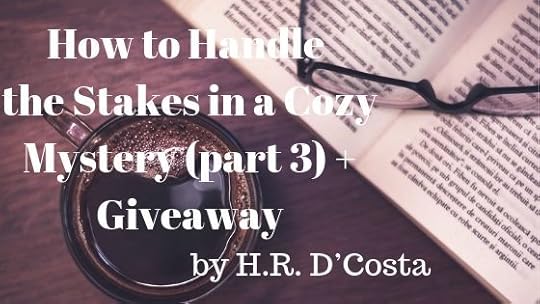
by H.R. D’Costa, @scribesworld
Standalone or series.
It’s a dilemma that many novelists face.
But for authors of cozy mysteries, the decision’s almost a foregone conclusion: series.
By all accounts, that’s what fans of the subgenre enjoy (especially the tropes they encounter again and again). That’s what fans expect.
Plus, as our blog host Elizabeth Spann Craig explains, writing a book for a series is oftentimes easier than writing a standalone because:
Usually everything after book one has already been established…You’ve already developed the main characters and the huge amount of work that goes along with that is mainly finished. The groundwork has been laid and you can focus on other aspects of your story.
In short, writing in a series is a win for you as well as for your readers. However, it does come with a complication that standalone novels don’t.
Before I get into specifics, let me just share a quick reminder. This post is part of an ongoing blog series about how to handle the stakes in a cozy mystery. (By the way, although the illustrative examples are cozy-centric, many of the tips in this series can be applied to mysteries with a harder edge.)
Parts 1 and 2 set the context for this post, so I strongly recommend that you read them first (if you haven’t already) before continuing.
Below, you’ll find an overview of the topics in this blog series, with convenient links to Parts 1 and 2:
In Part 1, we covered methods to bolster the stakes that emphasize the sleuth.
In Part 2, we covered methods to bolster the stakes that emphasize other storytelling elements that readers care about.
In Part 3, we’ll discuss considerations to take into account when applying these story stake tips to cozy mysteries in a series. (You’re reading Part 3 right now.)
In Part 4 (forthcoming), you’ll see these considerations in action when I share a sample lineup of stakes for a hypothetical cozy-mystery series.
Okay, with that overview in place, let’s return to that complication I mentioned earlier—the one you’ll have to face if you’re writing a cozy-mystery series (as opposed to a standalone).
The Special Problem You Face When Writing a Series
With any novel, you need to keep tabs on escalation.
Your plot should become progressively more interesting as it goes along.
If it doesn’t—if say, for example, all your genre elements are front-loaded into the first half of your story—everything that follows will feel anticlimactic in comparison, ultimately creating a dissatisfying reader experience.
But with a series, you have an additional burden.
You have to worry not only about the escalation within each individual book in the series, but also about how the series escalates as a whole. That is to say, based on how you developed the plots of your books, readers may feel like your series went downhill after a certain point.
A Common Mistake Made with the First Book in a Cozy-Mystery Series
Now that you’re aware of the issue with escalation, let’s bring it back to the topic of this blog-post series—handling the stakes in a mystery when the victim is unlikeable—and put all the pieces together.
An unlikeable victim can be advantageous because this situation generates plenty of suspects, which’ll keep your plot lively.
At the same time, it comes with a major drawback: readers might not care about solving the case. Why should they invest in catching the killer of an unlikeable person?
As one solution, instead of building the stakes around achieving justice for the sake of the victim, you build them around saving the sleuth protagonist from terrible consequences—e.g. being charged with the murder herself.
Due to the high stakes, readers will become emotionally invested in the plot.
Indeed, because of the appeal of these stakes, many novelists gravitate toward using this setup (the protagonist is the prime suspect) for the first book in their series.
However, although this can be an excellent way to convince readers to give your cozy-mystery series a chance, you can run into a problem down the line.
You started your series with the protagonist in an emotionally intense situation…which means you haven’t really given yourself room to escalate.
Although subsequent books ARE interesting in their own right, compared to the first book, they might not feel AS interesting.
In sum, readers could feel like your series went downhill after book #1, and abandon your series midway through it. Fortunately, it’s easy to avoid this outcome. Take a look…
3 Operating Principles to Maintain the Appeal of Your Cozy-Mystery Series
How to maintain the appeal of your series in the long run?
Simple. Just map out the plot for each book in the series in advance, and assess each one’s impact on how the series escalates as a whole.
By mapping out, we’re talking broad strokes here, so this is something both “plotters” and “pantsers” can do. Although, it must be said, the more details you know ahead of time, the more you can take advantage of that knowledge in later books.
When you do this, keep the following three operating principles in mind.
Ideally, the novels in your series will be more emotionally intense, as your series goes along.
However, the first book in your series should be engaging enough to lure readers into your series.
Series loyalty can carry readers through books that might not be as exciting as previous books in a series.
* * *
By adhering to the three principles listed above, you should be able to figure out how to preserve escalation across all the books in your cozy-mystery series.
But, before you do this on your own, you might like to see these principles in action, and get a sense of the reasoning process you’ll be going through. Happily, that’s the topic of the next (and last) post in this four-part blog series. See you then!
In the meantime, if you’d like to dig deeper into story stakes, download this cheat sheet with 11 types of story stakes. It might (a) give you additional ideas for how to make readers emotionally invested in the outcome of the case as well as (b) help you generate a variety of motives to match your healthy list of suspects.
You can also check out my writing guide Story Stakes: Your #1 Writing Skills Strategy to Produce a Page-Turner That Transforms Readers into Raving Fans of Your Screenplay or Novel . See below for details on how you could win a paperback copy…
Win a Paperback Copy of Story Stakes
For every post in this blog series, you have a chance to win a paperback copy of Story Stakes ($15.95).
Described as “a must-have in your top 10 books on writing” by one Amazon reviewer, it’ll show you how to use story stakes to elicit the maximum degree of emotion from readers as well as how to raise the stakes (even when they’re already high!).
For a chance to win today, answer this question in the comments: Besides escalation, what are other challenges that you face when writing a series?
Elizabeth will randomly select four lucky winners by Monday, August 19.
Note: This giveaway is only open to residents of North America, South America, and Europe.
Good luck and happy writing!
About H. R. D’Costa

A graduate of Brown University, H. R. D’Costa (a.k.a. HRD) is an author and writing coach who specializes in story structure and story stakes.
Known for her “deep dive” instruction style, she is the author of 8 writing guides including Sizzling Story Outlines , Story Stakes, and the 4-volume Story Structure Essentials series .
For practical, actionable writing tips designed to help you keep readers glued to your pages, visit her website scribemeetsworld.com, which is also home to the Ultimate Story Structure Worksheet (downloaded over 37,000 times by writers from around the world).
One Common Mistake Mystery Writers Make When Handling Unlikeable Victims (by @scribesworld ):
Click To Tweet
IMAGE CREDITS: Coffee & book by Amariei Mihai; Misty lake by Dominik Dombrowski; Detective in a trench by Shawn Liew
The post How to Handle the Stakes in a Cozy Mystery + Giveaway (Part 3 of 4) appeared first on Elizabeth Spann Craig.
August 10, 2019
Twitterific Writing Links
by Elizabeth S. Craig, @elizabethscraig
Twitterific writing links are fed into the Writer’s Knowledge Base search engine (developed by writer and software engineer Mike Fleming) which has over 50,000 free articles on writing related topics. It’s the search engine for writers.
Have you visited the WKB lately? Check out the new redesign where you can browse by category, and sign up for free writing articles, on topics you choose, delivered to your email inbox! Sign up for the Hiveword newsletter here.
Business / Miscellaneous
Book Proposal Basics: Synopsis, Series, and Sample: @Tamela_Murray
Where to publish your personal essay: @pubcoach
Should Writers Do Their Own Editing? @Belinda_Pollard
Parts of a Book (2019): Anatomy of a Book: @DaveChesson
Conferences and Events / Miscellaneous
Anthology Contest, Twitter Pitch, and Writing Challenge Info from @TheIWSG :
Creativity and Inspiration / Inspiration
What Role Does Learning Play in Your Creative Journey? @erikaliodice
Creativity and Inspiration / Inspiration / Reading as Writers
20 Horror Books by Authors of Color: @JtheBookworm @BookRiot
5 Horrifying Books Outside The Horror Genre: @teachrobotslove @LitReactor
11 Short Novels from Around the World that You Can Read in One Sitting: by Frances Yackel @ElectricLit
Creativity and Inspiration / Miscellaneous
The Difference Between Imagination and Creativity: @JackPrestonKing
Creativity and Inspiration / Productivity / Fitting in Writing
A Creative Way to Make Your Word Count Goal: A Word Crawl: @LynnHBlackburn @BRMCWC
Creativity and Inspiration / Writing Life
Stress and the Writer: To All Things a Season: @crazyauthorgirl
“In Defense of My Family Business: The Soap Opera Storyteller”: @NicholasMancusi @lithub
How to Respond to Criticism: @jimdempsey @WriterUnboxed
Earn Your Respect as a Writer: @EdieMelson
Writing should spark joy–in you and the reader: @speechwriterguy
12 Signs You’re Writing the Story You’re Meant to Be Writing: @MegDowell
15 tips for writing from home: @pubcoach
10 thoughts on nearly finishing a long-haul novel: @Roz_Morris
Being Weird Is a Good Thing. It’s Time to Embrace Yourself as a Writer. @losapala
Losing focus? There are reasons you derail your progress: by Jessica Abel
Genres / Fantasy
Building a Democracy in Your Fantasy World: by Oren Ashkenazi @mythcreants
Genres / Horror
6-word horror stories: @Lowenna @Independent
Genres / Mystery
How to Handle the Stakes in a Cozy Mystery + Giveaway: @scribesworld
How to Handle the Stakes in a Cozy Mystery + Giveaway: @scribesworld
Genres / Poetry
When Poets Don’t Read Poetry: @WritingForward
Genres / Screenwriting
The Seven Reasons Why We’re in the Golden Age of Documentaries: @JeffYorkWriter @CreativeScreen
Promo / Blogging
Ten Lessons from Ten Years of Blogging: @annerallen
10 Things You Wish You Knew Before Launching Your First Blog: @ShahidNida1 @WritetoDone
Promo / Images
How to Find Free (and Legal) Images Online: @ThDigitalReader
Promo / Miscellaneous
Raising Your Novel’s Visibility: Blog Posts & Leveraging Library Contacts: by Bonnie Randall
Promo / Social Media Tips
How to Conquer LinkedIn: @CaballoFrances
Publishing / Miscellaneous
Why 1 Writer Agreed to a B&N Exclusive: @barbross @WickedAuthors
Publishing / News / International Publishing
Big Bad Wolf shows us the global demand for affordable English-language books: @TNPS10
HarperCollins Italia Names Rizzo; Mondadori-Reworld Deal Closes: @Porter_Anderson @pubperspectives
China Bestsellers for June: Reading Pavilions Draw Crowds: @Porter_Anderson @pubperspectives
Penguin Random House Children’s Books to Publish Wattpad Books in UK: @Porter_Anderson @AshleighGardner @wattpad
Words Without Borders August: ‘We Are Not English’ in Wales: @Porter_Anderson @wwborders
Publishing / Options / Traditional Publishing / Querying
How to handle multiple protagonists in a query letter: @NathanBransford
Publishing / Process / Formatting
Formatting book text in Word: How to save time with the Styles tool: @LouiseHarnby
Publishing / Process / ISBNs
What Is An ISBN, And How Do I Get One? by Rebecca Langley @standoutbooks
Writing Craft / Beginnings
Real Life Diagnostics: Does This Opening Page Feel Slow? @Janice_Hardy
Writing In Medias Res: @jamesscottbell @killzoneauthors
A First Page Critique: @laurabenedict @killzoneauthors
Writing Craft / Characters / Antagonists
Take Two: Creating Multi-Layered Villains You Love to Hate: @jeannevb @WritersDigest
To the Villain, It’s a Zero-Sum Game: @SPressfield
Writing Craft / Characters / Development
Occupation Thesaurus Entry: Conductor: @beccapuglisi
Writing Better Books by Interviewing Your Characters: @AneMulligan @EdieMelson
7 Questions To Ask When Creating Character Goals: @StephMorrill @GoTeenWriters
List of character strengths and weaknesses: @NathanBransford
Writing Craft / Characters / Emotion
Identify Your Character’s Emotional Triggers: @LisaHallWilson
Writing Craft / Drafts
Before And After: Does Your First Draft Look Good Naked? by PJ Parrish @killzoneauthors
Writing Craft / Flashback and Back Story
How to Write Effective Flashback Scenes: @kristen_kieffer
Writing Craft / Miscellaneous
Why it works: “Gilead” by Marilynne Robinson: @NathanBransford
The Secret to “Writing What You Know”: by Barbara Linn Probst
How To Write A Good Leader: by Mark Alpert @killzoneauthors
Critique: 4 Ways to Write Gripping Internal Narrative: @KMWeiland
How Can I Make Gods Work as Characters? by Chris Winkle @mythcreants
How to Write Revenge Stories That Thrill and Satisfy Your Readers: by Joslyn Chase @write_practice
Solving The Loneliness Problem In Your Story: @davidfarland
Writing Craft / POV
Deep POV Secret: Strategic Setting: @LisaHallWilson
Writing Craft / Pre-Writing / Plotting
Story Structure in a Flash : @SeptCFawkes
What Does “Plot Reveals Character” Mean? @JamiGold
Writing Craft / Pre-Writing / Story Concept
Sifting through Mythology: Finding the Grains of Your Story: @Marc_Graham @WritersDigest
Writing Craft / Punctuation and Grammar
Punctuation Series: How to Edit En Dashes: @tishmartin1416
The Easiest Explanation of Semicolons: @SeptCFawkes
That v. which: a grammatical throwdown: @PhilipHensher @lithub
Writing Craft / Scenes
Building Your Scene-Quality Map: by Dawn Field @BookBaby
Writing Craft / Settings and Description
Character Descriptions: Avoiding the Boring Stuff: @AngelaAckerman @JamiGold
Characterize Your Character: @ZoeMMcCarthy
How to describe a character (with free character development crib sheet): @amabaie
How To Get the Most Impact From Your Setting: @ZaraAltair
204 Words That Describe Colors – A Resource For Writers: @Writers_Write
Writing Craft / Synopses
5 Steps to Writing a Captivating Nonfiction Book Synopsis: by Melissa Drumm @TCKPublishing
Writing Craft / World-Building
Understanding Appropriative Worldbuilding: by Chris Winkle @mythcreants
Worldbuilding Your Horse Breeds: @dancinghorse @tordotcom
Writing Tools / Apps
Markdown: The Easy Way to Write, Edit & Format Your Book: @carlaking @BookWorksNYC
Google Docs Add-ons for Writers: 6 of the Best: @nownovel
Writing Tools / Miscellaneous
Writing Tips: 11 Tools To Capture Your Creative Ideas: by Trevor Carss @thecreativepenn
The Top Writing Links From Last Week Are On Twitterific:
Click To Tweet
The post Twitterific Writing Links appeared first on Elizabeth Spann Craig.


